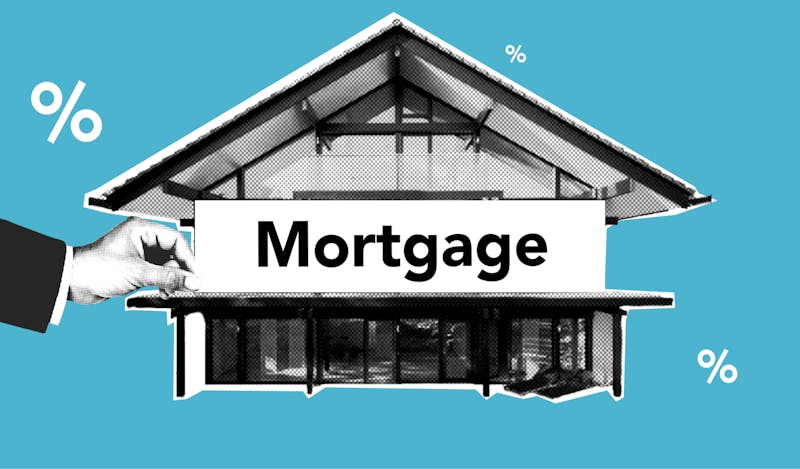Recent data from the Financial Consumer Agency of Canada (FCAC) reveals a concerning trend. The number of Canadian homeowners with a mortgage reporting an increase in debt has risen significantly, from 31.6% to 47.7%, representing an alarming increase of 16.1 percentage points. This substantial increase underscores the financial challenges many Canadians face.
Building on the insights we previously explored in our guide, “Comprehensive Mortgage Solutions,” we will now delve into debt consolidation and bridge financing as effective strategies to manage these challenges. We will examine their benefits, processes, and when they should be considered, providing insights to help Canadians better navigate their financial situations and alleviate debt-related stress.
What is Debt Consolidation?
Debt consolidation is a powerful financial strategy designed to help individuals regain control over their financial situations by merging a variety of debts into a single, more manageable obligation. These debts typically include credit card bills, personal loans, and various other unsecured financial obligations. What distinguishes debt consolidation from traditional loans is the often-integrated aspect of collateralization. In many cases, valuable assets, such as a mortgage or other property, are used as collateral to secure the consolidated debt.
The central objective of debt consolidation is two-fold: to curtail the overall interest rates incurred on multiple debts and to streamline the often convoluted landscape of monthly payments.
Benefits of Debt Consolidation
Debt consolidation offers several advantages, including:
- Lower Interest Rates: One of the most compelling benefits of debt consolidation is the potential to secure a lower interest rate. In most cases, the interest rate on a debt consolidation loan or line of credit is notably lower than the rates associated with high-interest credit cards or other unsecured debts. This can lead to substantial savings over time, reducing the overall cost of borrowing and making it more cost-effective to pay down existing debts.
- Simplified Finances: Managing a multitude of debts with varying due dates, interest rates, and terms can be overwhelming and confusing. Debt consolidation streamlines your financial obligations by consolidating them into a single, more manageable loan. This means you’ll only need to make one monthly payment, typically at a lower interest rate, greatly simplifying your financial life. This simplification not only eases the administrative burden but also offers a clearer perspective on your financial progress.
- Potential Credit Score Improvement: Timely payments on a consolidated debt can have a positive impact on your credit score. When you consistently make on-time payments on a single, consolidated loan, it demonstrates financial responsibility and reliability to credit reporting agencies. This can gradually enhance your credit score, making it easier to access credit at more favourable terms in the future.
- Fixed Repayment Schedule: Debt consolidation loans come with a fixed repayment schedule, which provides structure and predictability to your financial planning. Knowing exactly when your debt will be fully paid off enables you to create a solid budget and financial plan. This stability can reduce anxiety associated with fluctuating interest rates or uncertain debt repayment timelines.
- Reduced Stress: The burden of managing multiple debts, often with high-interest rates, can be a significant source of stress. Debt consolidation lightens this load by making your debt more affordable, which, in turn, reduces the mental and emotional strain associated with financial worries. Having a single, consolidated debt to focus on can offer peace of mind and financial stability.
- Debt Reduction: Debt consolidation allows you to actively reduce your outstanding debt. By consolidating high-interest debts, you may be able to pay off your obligations more quickly, saving you money on interest payments in the long run.
- Enhanced Financial Discipline: A consolidated debt typically comes with a fixed repayment schedule. This can help you develop and maintain better financial discipline, ensuring that you make consistent payments and reduce your debt steadily over time.
- Variety of Debt Types: Debt consolidation is versatile and can be applied to various types of debt, such as credit card debt, personal loans, medical bills, and more. It provides a holistic approach to managing multiple financial obligations.
Debt Consolidation Strategies
Debt consolidation can take various forms, depending on the individual’s financial situation. Strategies may include taking out a debt consolidation loan or consolidating debts through a mortgage. Let’s check the methods in details:
1.Debt Consolidation Loans: A Common Approach
One of the most common methods for consolidating debt is to obtain a debt consolidation loan, which can be secured from various financial institutions. This type of loan provides individuals with the means to pay off their existing debts by replacing them with a new, single loan. Debt consolidation loans are generally favourable due to their typically lower interest rates compared to the high rates often associated with credit cards, offering a more cost-effective and manageable option for those seeking to streamline their financial commitments and reduce overall interest expenses.
2. Consolidating Debts with a Mortgage
Debt consolidation often entails securing the consolidated debt with collateral, and one of the most common forms of collateralization is through a mortgage. Using a mortgage to consolidate your debts can provide several advantages. Here’s a closer look at the specific aspects of consolidating debts with a mortgage:
- Collateralization with a Mortgage: Debt consolidation frequently involves securing the consolidated debt with collateral, most commonly in the form of a mortgage. When you use a mortgage to consolidate your debts, it means that your home or property serves as the security against the loan. This form of debt consolidation is known as a home equity loan or a home equity line of credit (HELOC).
- Home Equity Loans (Second Mortgages): A home equity loan allows you to borrow against the equity you’ve built in your home. This type of debt consolidation typically offers a lump sum of money that you can use to pay off high-interest debts.
- Home Equity Line of Credit (HELOC): A HELOC works more like a credit card, allowing you to borrow as needed up to a certain limit. This flexible option can be a practical choice for those who may not need to consolidate all their debts at once but want access to a revolving line of credit backed by their home’s equity.
- Risks of Using a Mortgage as Collateral: While using your home as collateral can lead to lower interest rates and favourable terms, it’s essential to be aware of the potential risks. Should you be unable to make the payments on the consolidated debt, there’s a risk of losing your home.
- Consideration of Loan-to-Value (LTV) Ratio: Lenders typically evaluate the loan-to-value (LTV) ratio when offering home equity loans or HELOCs. This ratio represents the amount you owe on your mortgage compared to the current appraised value of your home.
3. Consolidating Debt with a Personal Loan
In some cases, Canadians may choose to use personal loans to consolidate their debts. These loans are unsecured, meaning they do not require collateral, and can be used to pay off various high-interest debts. However, they often come with higher interest rates compared to mortgage-based debt consolidation. Personal loans offer flexibility and may be preferred by individuals who don’t want to risk their assets but are willing to manage slightly higher interest costs in exchange for unsecured debt consolidation.
Are There Any Disadvantages to Debt Consolidation?
While debt consolidation can be a helpful financial strategy, there are potential drawbacks, including:
- Extended Repayment Period: Extending the repayment period may result in paying more interest in the long run.
- Risk to Assets: Secured debt consolidation, such as a mortgage, puts the associated asset at risk if payments are not made.
- Credit Score Impact: Initially, your credit score may drop, but it should recover as you make timely payments.
Now it’s time to speak about bridge financing.
How Bridge Financing Works
Bridge financing serves as a crucial financial solution within the realm of real estate transactions. Its primary function is to enable both homebuyers and real estate investors to bridge the temporal gap that often exists between the sale of an existing property and the acquisition of a new one. This unique financial tool facilitates the seamless transition from one property to another by providing the necessary funds during this critical interim period.
Bridge Loans
Bridge loans are specially crafted short-term financial instruments tailored to address this transitional challenge. Typically accompanied by slightly higher interest rates, these loans serve as a bridge between purchasing a new property before selling an existing one. The central purpose of bridge loans is to prevent homeowners from shouldering the financial burden of owning two properties simultaneously, thereby ensuring a smoother and more manageable transition within the real estate market.
Bridge Financing Process
The bridge financing process involves several essential steps:
- Assessment: Lenders meticulously assess the value of your existing property as well as your creditworthiness to determine the amount of bridge financing you qualify for.
- Loan Approval: Once your application is approved, you gain access to a bridge loan, equipping you with the financial means to secure your new property.
- Sale of Existing Property: After successfully selling your existing property, the proceeds generated from the sale are typically used to settle the bridge loan, ensuring a smooth transition without the financial burden of carrying both properties.
- Transition to a Mortgage: If the need arises, you can opt to transition from the bridge loan to a long-term mortgage, allowing you to structure your financial arrangements according to your specific needs and preferences after the sale of your previous property. This transition marks the completion of the bridge financing process, which has effectively facilitated your journey from one property to the next within the real estate market.
When Should I Consider Bridge Financing in Real Estate?
Bridge financing can be a valuable tool for:
- Homebuyers: Bridge Financing for homebuyers can be favourable when you want to buy a new home before selling your current one.
- Downsizing: When moving to a smaller property, bridge financing can help with the purchase before selling the larger one.
- Competitive Real Estate Market: In a competitive market, bridge financing ensures you don’t miss out on your desired property.
Bridge Financing for Real Estate Investors: Benefits of Bridge Financing in Real Estate
For real estate investors, bridge financing offers unique advantages, including:
- Swift Transactions: Investors can secure properties quickly, allowing for faster turnaround and potential profit.
- Portfolio Expansion: Bridge financing enables investors to acquire additional properties while they optimize existing ones.
- Renovation Funds: Investors can use bridge loans to fund renovations and improvements to increase property value.
Debt Consolidation vs. Bridge Financing
Debt consolidation and bridge financing are two distinct financial strategies with specific purposes. Debt consolidation primarily focuses on improving one’s overall financial health by combining multiple existing debts into a single, often lower-interest obligation. Its primary aim is to reduce interest rates, simplify monthly payments, and alleviate the burden of managing various debts.
In contrast, bridge financing is a short-term financing solution, frequently used in real estate transactions. It serves as a bridge between selling one property and purchasing another, typically through a short-term loan, allowing individuals to secure their new property before selling the old one.
While debt consolidation addresses the management of existing debts and long-term financial well-being, bridge financing is geared towards facilitating the smooth transition between real estate transactions, such as buying a new home before selling the current one. The choice between these strategies depends on an individual’s specific financial goals and circumstances.



